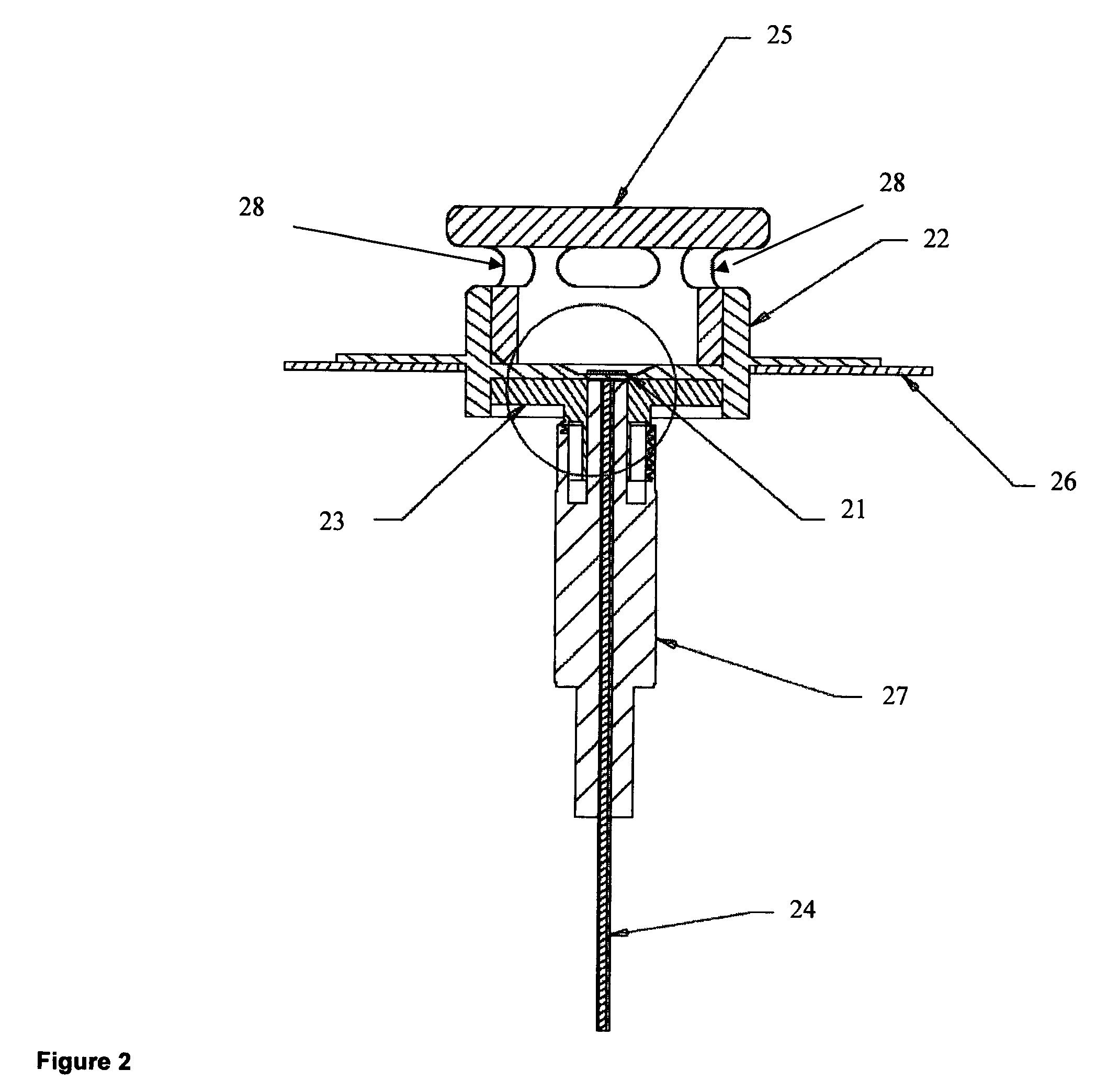Optical interface for disposable bioreactors
a bioreactor and optical interface technology, applied in the field of improved methods and apparatus for measuring analyte concentration in disposable bioreactors, can solve the problems of inability to maintain a sterile system, difficulty in continuously and reliably providing on-line monitoring, and difficulty in successfully implementing electrochemical probes with disposable bioreactors
- Summary
- Abstract
- Description
- Claims
- Application Information
AI Technical Summary
Benefits of technology
Problems solved by technology
Method used
Image
Examples
Embodiment Construction
[0043]Despite their inherent limitations, it is sometimes advantageous to utilize fiber optic delivery and / or collection systems with disposable bioreactors. A method and port assembly apparatus in accordance with the present invention that enable the reliable use of fibers in this application are depicted in FIG. 2. In FIG. 2, 21 is a fluorophore (e.g.: an oxygen sensitive fluorophore), 22 is an optically translucent (and preferably biocompatible) material such as polyethylene. This hollow port member is thermally or RF welded into the bioreactor's polymeric wall surface 26. 24 is the fiber optic cable, and 25 is a foraminous shield fitted to port 22 that prevents ambient light from directly impinging upon the fluorophore and thereby causing drift in the reading through accelerated photo-degradation. However orifices 28 in the shield allow the fluid contents of the bioreactor bag to contact the fluorophore and thereby decrease the fluorophore emission strength by quenching. Additio...
PUM
| Property | Measurement | Unit |
|---|---|---|
| mode field diameter | aaaaa | aaaaa |
| full angle | aaaaa | aaaaa |
| full angle | aaaaa | aaaaa |
Abstract
Description
Claims
Application Information
 Login to View More
Login to View More - R&D
- Intellectual Property
- Life Sciences
- Materials
- Tech Scout
- Unparalleled Data Quality
- Higher Quality Content
- 60% Fewer Hallucinations
Browse by: Latest US Patents, China's latest patents, Technical Efficacy Thesaurus, Application Domain, Technology Topic, Popular Technical Reports.
© 2025 PatSnap. All rights reserved.Legal|Privacy policy|Modern Slavery Act Transparency Statement|Sitemap|About US| Contact US: help@patsnap.com



